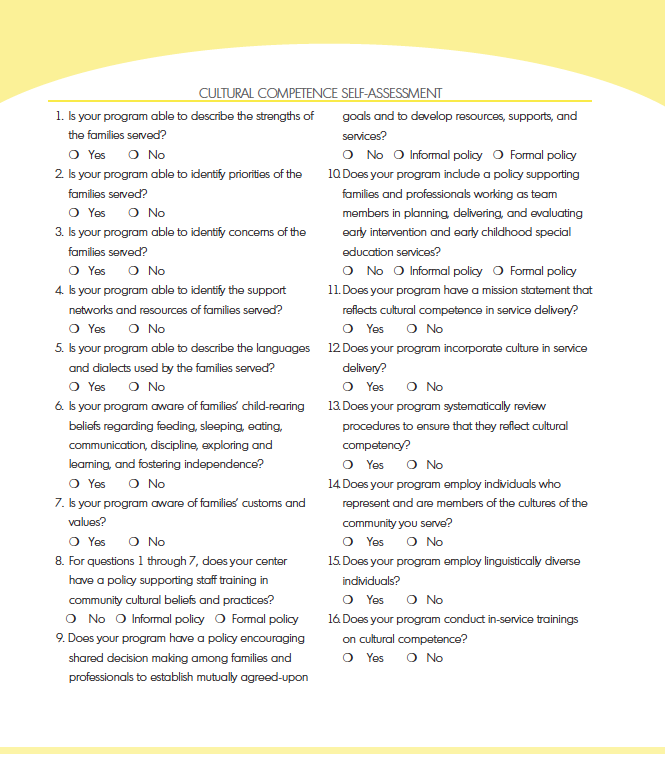As early childhood organizations become increasingly diverse, Johnna Darragh Ernst, PhD, stresses the need for early childhood administrators and staff to look at how to engage families in a comprehensive, systematic way that is respectful and responsive to each family’s needs. "Your ability to communicate with families in a culturally competent way is an important precursor to engagement. You must couple your individual efforts with organizationally competent practices," relates Dr. Ernst in her book, The Welcoming Classroom: Building Strong Home-to-School Connections for Early Learning.
Just as we each have unique personal social identities, organizations also have identities. Each organization develops a unique cultural framework, which may welcome and encourage diversity or may demand conformity. Just as we need to be in touch with our social identities and how these influence our cultural framework, organizations that want to be culturally and linguistically competent need to consider these factors at an institutional level.
Your ability to successfully communicate is based on your ability to understand your schemas and their effect on the unique social identities and schemas of others. At an individual and organizational level, this can communicate that you value individuality and diversity. Organizations demonstrate a value for diversity through effective, respectful communication strategies tailored to each family’s preferred styles of communication.
Furthermore, developing a culturally responsive program is not a one-time event where policies and practices are developed and allowed to grow stagnant. Ongoing assessment is an important part of the equation, as is the process of adaptation. Just as a child changes developmentally, organizations change over time with the staff employed, children and families enrolled, challenges faced, and overall strengths.
Is your early childhood program or organization culturally competent? What follows is an example of a cultural competence self-assessment from the book, The Welcoming Classroom, that you can take in order to assess the strengths and challenges of your organization in terms of promoting diversity and inclusion.

In The Welcoming Classroom, you will find practical strategies for connecting with families from varied cultural and language backgrounds and abilities, tools for creating a home-to-school link to support learning, and guidance on creating a richer learning environment for every young child in your program by integrating unique family cultural perspectives.
PDF from The Welcoming Classroom: Building Strong Home-to-School Connections for Early Learning, by Johnna Darragh Ernst, PhD (page 100).
Author(s)Johnna Darragh Ernst, PhD
Jaimee Council
A graduate of Appalachian State University with B.S. in Communication - Electronic Media and Broadcasting, Jaimee Council served a content strategy team lead for Gryphon House and Kaplan Early Learning Company from 2021-2022. Her talents include writing, photography, video production, audio production, blog management, website content management, social media management, some design, and data analytics for websites, social media, and customer relationship databases.